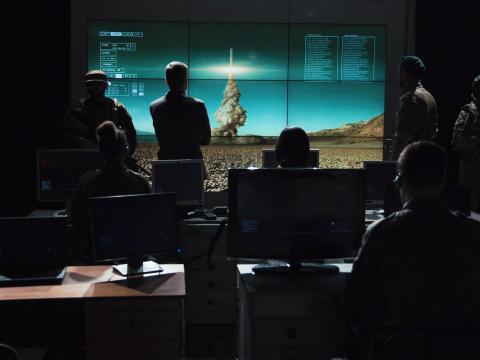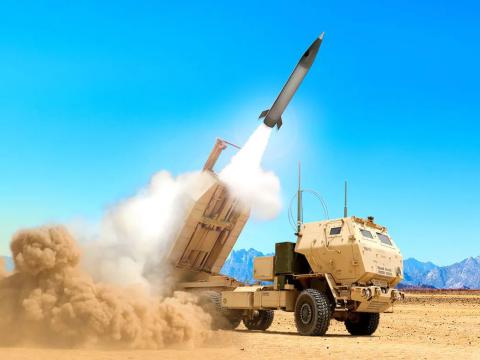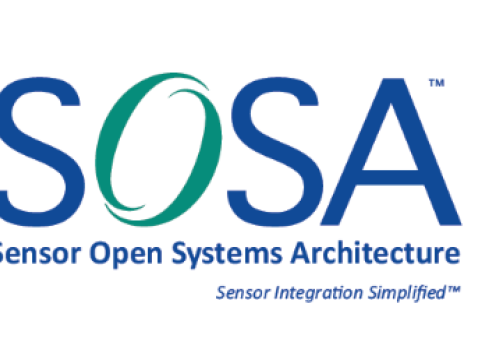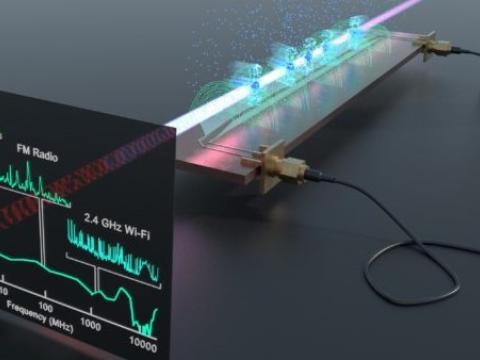LandWarNet Show Daily--Wednesday
Wednesday's events at LandWarNet began with a talk by Gen. James N. Mattis, USMC, NATO supreme commander transformation, and commander U.S. Joint Forces Command. The general opened by saying he is passionate about command and control (C2), but added that C2 is an important capability that extends beyond technology. "No matter how brave your soldiers are, they're going to catch RPG's in the chest if you don't get C2 correctly," he cautioned.
The general noted that C2 is commonly seen as a technology subject, but there is a critical human aspect to it. He said his goal is to refine and define C2 problems and to solve them because C2 is the glue that holds military, intelligence and civilian government agencies together. It is essential that command and control is done right, he said.
Citing the approach taken at Joint Forces Command in Norfolk, VA, the general sees C2 as a leader-centric practice. He emphasized that C2 implies trust. This trust is especially true on the battlefield where commanders must rely on their subordinates. Gen. Mattis notes that decentralized command speeds action by allowing field officers to exercise their initiative. But he adds that training and education is key to achieving this goal.
Technological improvements will shorten the orders that commanders get, Gen. Mattis predicted. Instead of long, detailed orders that consume bandwidth, battlefield leaders will be increasingly called upon to use their own initiative to achieve operational goals. He explains that C2 is moving from a need to know to a need to share status and added that changing technology is causing a sea change throughout the military. This change will modify command and control to what he described as command and feedback.
Likewise, the general explained that a network is more than just technology. The network-both the hardware and the human- must support troops at the tactical edge. "Agility is not solely technological," he says, adding that warfighters must also be prepared and be able to fight without technology should they lose network connetivity.
War is time sensitive, the general says. Non commissioned officers and officers must be able to use initiative and take advantages of opportunity. Subordinates must exercise initiative to carry out commanders' intent, he said. The general added that commanders' intent also accepts the reality that the enemy is thinking and active rather than passive and reactive.
Another important aspect of command and feedback is that it is fast and keeps the enemy off balance by being unpredictable. He notes that in war, the enemy will always create fog and friction.
The general said that of all the world's militaries, the U.S. is the most reliant on computers. This also makes the U.S. highly vulnerable. "We're going to have to be ready to operate in a complex, chaotic information environment," on the battlefield, he says. Warfighters must improvise because war is chaotic and unpredictable. However, he notes that while the character of war may change, its nature will not.
As a NATO commander, the general maintains that he believes in joint operations. However, he says that the services and nations must maintain their individual cultures because they all bring something to the mission.
Gen. Mattis concluded that networked C2 is very beneficial, when it is backed by training and education. He notes that joint and coalition warfare is not a natural state for commanders who tend to revert back to their national and service preferences. But he adds that today, no nation on its own can guarantee the safety of its own people.
A key topic of today's panels was the Army's command, control, communications, computers, surveillance and intelligence (C4ISR) road map. Col.William C. Hoppe with the PM WIN-T, PEO C3T, outlined the service's C4ISR transport evolution goals which include increasing spectrum efficiency, connectivity to lower echelons, mobility and transport ability, range and reach, flexibility and ease of employment.
Among the major Army communications systems discussed, the colonel highlighted enhanced position location radio system (EPLRS) and the single channel ground to air radio system (SINCGARS). EPLRS provides voice and high speed data throughput for mounted and dismounted warfighters. In the near future, EPLRS systems will be integrated with DAGR devices. Col.Hoppe notes that this application is not necessarily for position reporting but for network synchronization. The Defense Advanced Research Projects Agency (DARPA) and the Defense Information Systems Agency (DISA) are also working examining the potential for EPLRS as a part of a dynamic spectrum access technology that would automatically rout transmissions to empty areas of bandwith.
For SINCGARS, which is used to move voice and data communications to the lowest echelons of the force, the system is being improved with a new radio. Col.Hoppe notes that a new contract has been awarded to an industry team consisting of ITT and Thales. The SINCGARS G radio combines circuit boards from ITT and elements from Thales' JEM radio. He explains that this radio will provide warfighters with capabilities similar to JTRS.
Col. Hoppe also discussed Increments 1, 2, and 3 of the WIN-T program. Major parts of Increment 1 are being deployed and Increments 2 and 3 will create an integrated transmission system with terrestrial and over the horizon capabilities. The service is also pushing Increment 2 down to the company level. An important aspect of Increment 2 is a satellite communications application that can automatically reconnect broken terrestrial communications links.
Another future-leaning effort is the Wireless Networking After Next (WNAN) program being developed by DARPA. The agency is developing a low-cost four-channel radio that will extend tactical communications to dismounted troops.
The colonel closed by discussing the annual Joint Interoperability Communications Exercise (JUICE) held in Fort Monmouth, New Jersey. The goal of the event is to integrate evolving technologies into existing systems used throughout the battlespace. The colonel says that JUICE allows new communications solutions to be developed and tested in a controlled environment.
The highlight of the afternoon at LandWarNet was the plenary session regimental address given by three Army commanders responsible for communications and network support for the service.
Mag. Gen. Susan Lawrence, USA, commanding general of the 9th Signal Command, highlighted her command's mission, which is to be the signal/network provider to all Army units. During her discussion, she challenged government and commercial audience members to approach her with solutions to help with Army network bandwidth and security.
The challenge of moving the Army's Communications Electronic Command's (CECOM's) Lifecycle Management Command (LCMC) from Fort Monmouth to Aberdeen, Maryland, was outlined by Mag. Gen Randolph P. Strong, USA, commanding general of the LCMC. One of the LCMC's challenges is to move to a new facility without interrupting service to ongoing combat operations. He notes that the move will consolidate the command's functions into a single campus.
Brig. Gen. Jeffrey W. Foley, USA, commanding general of the Army Signal Center at Fort Gordon, highlighted his command's activities. One of his command's important functions is providing signals training to U.S. and foreign troops. In February, the command established a digital TOC to train majors, captains, second lieutenants, warrant officers, and non commissioned officers.
Gen. Foley also noted that the Signal Center is working with universities such as Augusta State, Syracuse University and the University of Colorado to provided bachelors' degree courses for warrant officers.
Doctrine is another key part of the Signal Center's responsibilities. The general highlighted two new documents affecting military communications. FM 6-02.71 is with first document focusing on network operations. It defines network operations, roles, responsibilities and functions at all levels.
The other document is ST 6-02.72 on communications security (COMSEC) operations. The general said that it is the first regulation written to specifically cover COMSEC operations. It defines COMSEC roles and responsibilities.




Comments